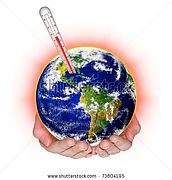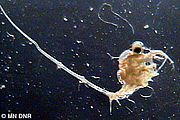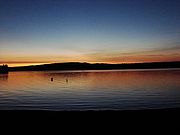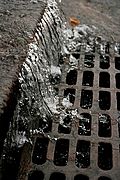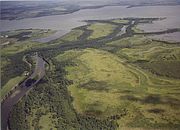Earlier this year the Vermont Legislature asked the Agency of Natural Resources (VT ANR) to produce a report that did four things: examined funding options for water quality improvements, estimated the total state-wide need for such funding, suggested ways the funds could be administered, and identified priority needs for action. MORE Read...
News from Selected Month
The New York State Department of Environmental Conservation (NYS DEC) has issued draft regulations for fracking and is accepting public comments until January 11. In 2012 Vermont became the first state to ban fracking. LCC lobbied for the ban and is critical of New York’s decision to issue revised draft rules prior to the completion of a health study currently being conducted by the Commissioner of Health and before the release of an environmental impact statement begun in 2008. MORE Read...
As our climate warms, Lake Champlain changes. Already we have seen a decrease in winter ice cover and an increase in precipitation throughout the Basin. Where once the lake froze over almost every year, it has now been five years since the last freeze over. We already receive an additional three inches of precipitation per year with greater increases anticipated. MORE Read...
In August of this year, the spiny waterflea was found in Lake George, greatly increasing the possibility of its eventual arrival in Lake Champlain. Lake George has a direct connection to Lake Champlain via the LaChute River. Spiny waterfleas have also been found in the Champlain Canal which connects Lake Champlain to the Hudson River. MORE Read...
The Vermont Agency of Natural Resources (VT ANR) is on the verge of releasing a new map of biological resources in the state. This map goes well beyond what might appear on a flat piece of paper. VT ANRs’ BioFinder project will provide an important new tool for assessing the significance of Vermont lands and waters for conservation planning and education. MORE Read...
One of the great joys of living near Lake Champlain is the breath-taking sunrises or sunsets one can see over the water. Colors can range from a crisp red to a blend of pastel hues, from pink to baby blue, shifting even over the course of the event. Why is it that dawn and dusk lend such a visual explosion to the sky while mid-day colors range merely from blue through gray? MORE Read...
On December 5th, Vermont issued the second round of permits for municipal separate storm sewer systems (MS4). The first round was required under the Clean Water Act in 2003. The first round permit covered twelve Chittenden County communities, UVM, the state Agency of Transportation, and the Burlington International Airport. MORE Read...
The draft Missisquoi Bay Basin Water Quality Management Plan has been released for review. The plan lays out the current condition of the surface waters and aquatic habitat, water quality problems, and strategies to improve and restore water quality. MORE Read...
LCC’s work for a healthy, accessible lake depends upon the active involvement of many dedicated volunteers who lend heads, hands, and heart in a myriad of ways. As we close out 2012 the LCC Board of Directors and staff extend our thanks to everyone who has supported our efforts in the field, on the water and out in the community. MORE Read...



